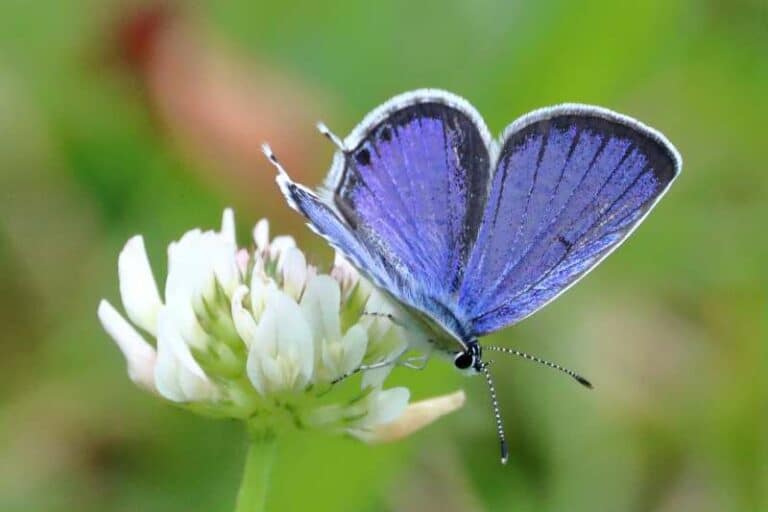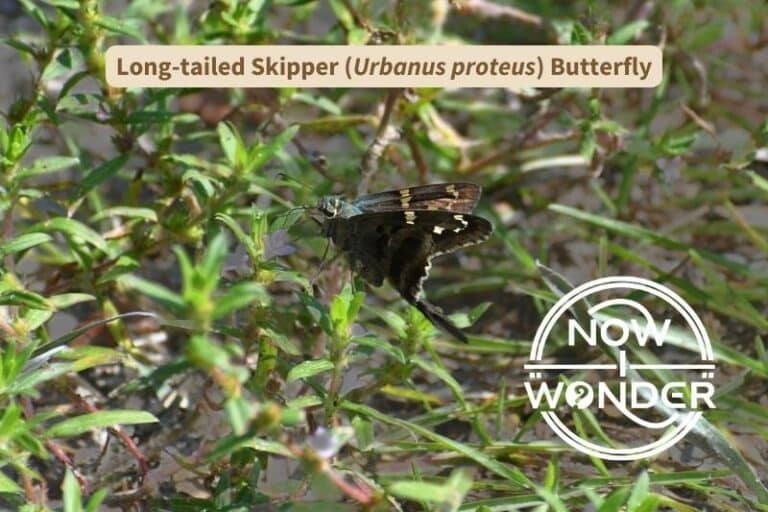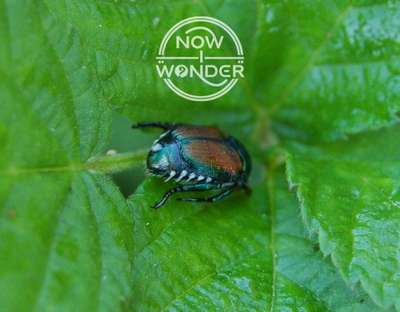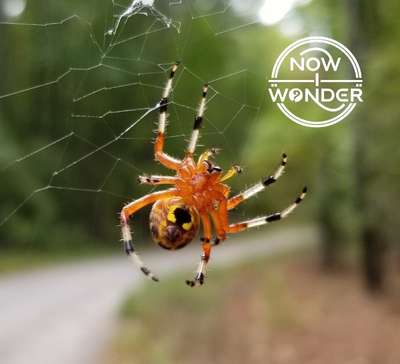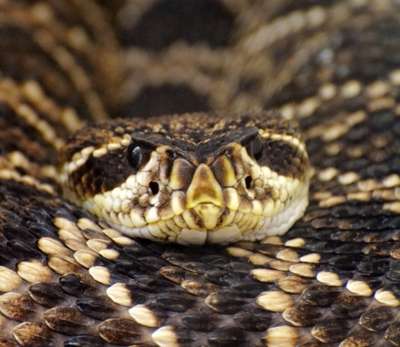Common names for animals can sometimes lead you astray by implying that certain animals have certain traits or abilities. In many cases, the implications are false – the common name is fanciful or inaccurately describes the animal. But for the insects known informally as “assassin bugs”, their common name is pretty much dead-on accurate.
A good general rule when dealing with any wild creature is to appreciate from a safe distance but don’t touch, handle, or otherwise harass or interfere with it in any way. This rule applies to assassin bugs perhaps more than most animals. Despite the fact that an average American man outweighs an assassin bug by more than 90,000 times, these insects are more than capable of inflicting serious pain on humans.
Read on for more information about assassin bugs in general and one species in particular that is common throughout North Carolina.
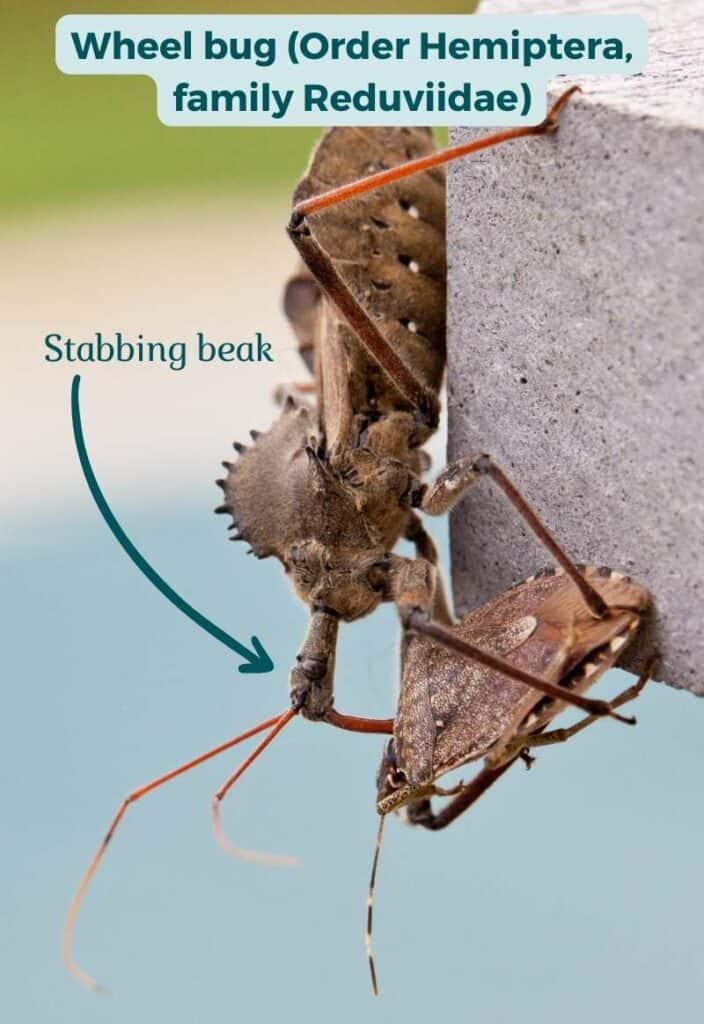
Classification of Assassin Bugs
| Kingdom | Animalia |
| Phylum | Arthropoda |
| Class | Insecta |
| Order | Hemiptera |
| Family | Reduviidae |
Assassin Bug Species Found In North Carolina
| Wheel bug (Arilus cristatus) |
Number of Assassin Bug Species
More than 6700 species of assassin bugs have been identified (Resh and Carde, 2009). Family Reduviidae is the second largest family of hemipterans – otherwise known as the “true bugs” – and one of the most successful groups of predatory insects in the world.
Physical Appearance of Assassin Bugs
Assassin bugs – also called reduviids after their Family name – are longer than they are wide, and range in size from 3-4 mm all the way up to more than 40mm (Resh and Carde, 2009).
Their heads are long and narrow, with a prominent groove that runs between a pair of bulging eyes, and tipped with a sturdy, three-segmented beak. At rest, the beak rests in a groove underneath the thorax. When the insects bite, they flip their beaks out to ready position then stab sharply downwards.
Many reduviids are brightly colored, which acts as a visual warning to potential predators that these bugs are better left alone, while the coloration of other species is dull and muted. One example of the latter is the wheel bug, Arilus cristatus, which is a dull grey to black except for its reddish antennae. The bland coloration helps them blend into the background as they stalk their prey.
Because assassin bugs are hemipterans, they share similar wing characteristics with other insects in order Hemiptera. Their forewings (also called “hemelytra”) are leathery at the base but membranous towards the tips (Hemiptera means “half wing”) and overlap each other. Their fully membranous hind wings power their flight and fold underneath the forewings when the insects are perched.
Lifecycle of Assassin Bugs
Assassin bugs are hemimetabolous insects and undergo “incomplete metamorphosis”. This means that immature assassin bugs resemble the future adult form, with the exception of being wingless. Known as “nymphs”, the immature assassin bugs grow through five distinct stages called instars, during which they increase to their full adult size and sprout wings.
Habitat and Distribution of Assassin Bugs
Assassin bugs generally live in habitats with thick plant growth such as meadows, fields, and gardens. Different assassin bug species are found in different areas but the family is abundant and widely distributed, with approximately 110 species found in North America (Eaton and Kaufman, 2007).
Food and Feeding Behavior of Assassin Bugs
Assassin bugs feed on a wide variety of prey, some of which may be much larger than they are themselves, including:
- Spiders
- Caterpillars
- Beetles
- Grasshoppers
- Ants
- Crickets
- Other invertebrates
Assassin bugs are aptly named; their hunting technique brings to mind an assassin sneaking up on a victim.
Reduviids actively stalk prey. They move so slowly and carefully towards their intended meal that the hapless prey often doesn’t notice their approach until too late. When ready to strike, the assassin bugs flick their beaks forward into striking position, then stab downwards.
The force of the stabbing motion combined with the mechanical strength of their beaks is more than sufficient to penetrate the hard exoskeletons of insects; striking softer-boded invertebrates like spiders and caterpillars is almost too easy for them.
Assassin bugs also have strong foreleg muscles and raptorial legs. They use their powerful forelegs to grip their prey and prevent escape. But it turns out that reduviids don’t have to hold onto their victims long. Assassin bugs inject paralyzing saliva through their maxillae (inner, paired mouthparts). This saliva contains toxic venom that kills invertebrates quickly and is powerful enough to overwhelm insects much larger than the assassin bugs themselves.
Assassin bug saliva serves a second, very important purpose as well. It liquefies organic tissue by rupturing cells walls – essentially “pre-digesting” their prey in much the same way as spider venom. Assassin bugs suck the nutritious slurry up through their beaks to feed, just like we suck milkshakes through straws.
For more information about venomous assassin bug saliva, see the “Fun Facts about Assassin Bugs” section of this post below.
Assassin bug nymphs eat the same prey as the adults. Reduviids are considered “presocial insects” in part because they sometimes feed communally, with multiple small nymphs draining a single prey at the same time (Resh and Carde, 2009).
Predators of Assassin Bugs
- Insectivorous mammals
- Virginia opossums (Didelphis virgiania)
- Shrews
- Mice
- Coyotes (Canis latrans)
- Red foxes (Vulpes vulpes)
- Striped skunks (Mephitis mephitis)
- Spiders such as wolf spiders (family Lycosidae) – for more information about wolf spiders, check out this other Now I Wonder post “What are wolf spiders?”
- Amphibians
- American bullfrogs (Rania catesbeiana)
- American toads (Bufo americanus)
- Reptiles
- Green anoles (Anolis carolinensis)
- Five-lined skinks (Plestiodon fasciatus)
- Insects
- Other assassin bugs
- Praying mantids such as Carolina mantid (Stagmomantis carolina)
Fun Facts about Assassin Bugs
- Assassin bugs get their common name for the seemingly cool and calculating way they stalk their prey before stabbing them to death.
- Female assassin bugs guard their eggs and newly hatched young against predators by physically covering them with her body. The nymphs reflexively turn toward the female, who will actively defend them with her sharp, stabbing beak (Resh and Carde, 2009)
- Most assassin bugs are “zoophagous”, which means they prey on other animals, but some genera are “hematophagous”, meaning they consume blood.
- Assassin bugs bite in defense readily. Their beaks are strong and sharp enough to penetrate human skin easily and the venom they inject causes humans severe pain. LEAVE THESE INSECTS ALONE.
- Assassin bugs secrete venom from two main glands called the anterior main gland (AMG) and the posterior main gland (PMG). Each gland secretes a different type of venom. Assassin bugs can choose the glands from which venom is pulled and inject different venom depending on whether the insects are attacking prey for food or biting in defense (Fischer et al., 2023). Venom used for hunting is very effective against invertebrates and used to kill prey. Hunting venom produced by one species of assassin bug called Pristhesancus plagipennis “produced 100% paralysis and 60% death after 15 min, and 100% mortality after 60 min”. (Walker et al,. 2018).
Conclusion:
Assassin bugs are relatively large insects and naturally move slowly, so are easy to observe in the wild when they venture out into the open. But most of the time, they are hidden amongst vegetation, either hunting for prey or hiding from predators, so are hard to spot.
Reduviids are really rather cool insects so it’s worth your time to get to know them. Just remember that they are well and truly named and not to be trifled with. They can and will bite and the most common adjective used to describe an assassin bug bite is “excruciating”. Keep your distance and never, ever, ever pick one up!
References
Eaton, Eric R., and Kaufman, Kenn. 2007. “Kaufman Field Guide to Insects of North America.” Mariner Books. HarperCollins.
Resh, Vincent H., and Cardé, Ring T., eds. 2009. Encyclopedia of Insects. San Diego: Elsevier Science & Technology.
Walker, Andrew A., Mark L. Mayhew, Jiayi Jin, Volker Herzig, Eivind A. B. Undheim, Andy Sombke, Bryan G. Fry, David J. Meritt, and Glenn F. King. 2018. “The Assassin Bug Pristhesancus Plagipennis Produces Two Distinct Venoms in Separate Gland Lumens.” Nature Communications 9 (02): 1-10. doi:https://doi.org/10.1038/s41467-018-03091-5.

